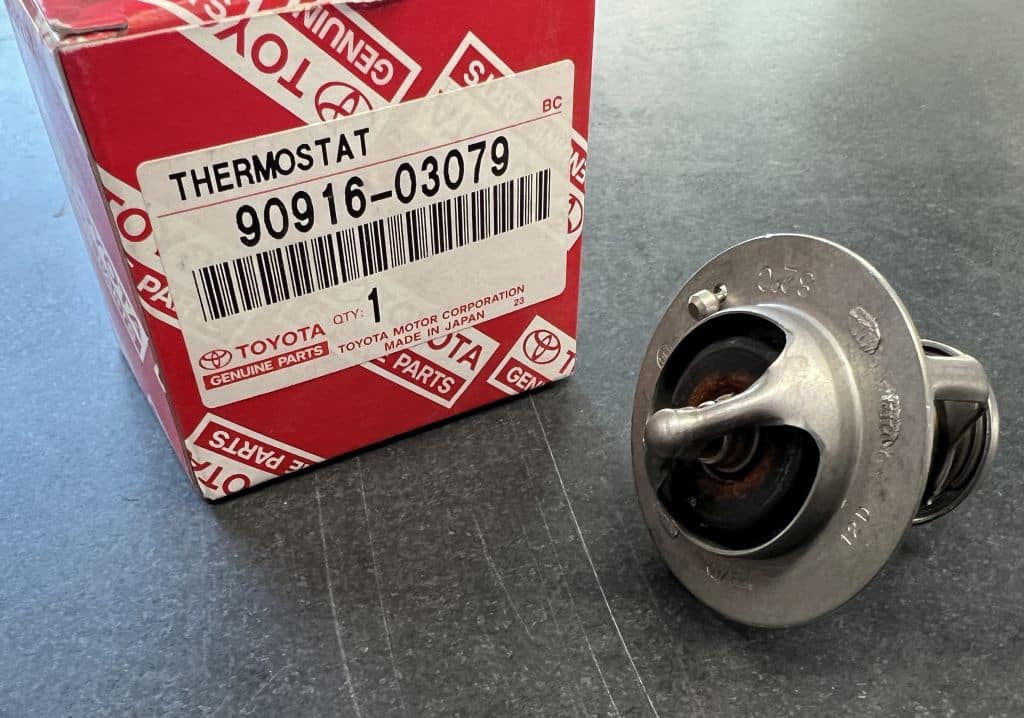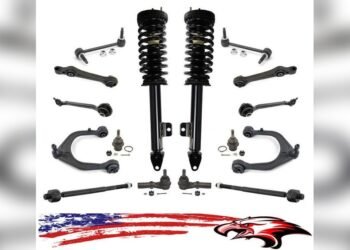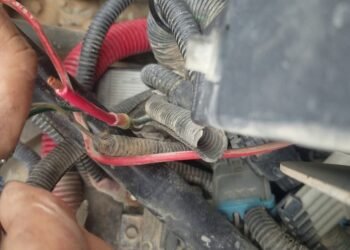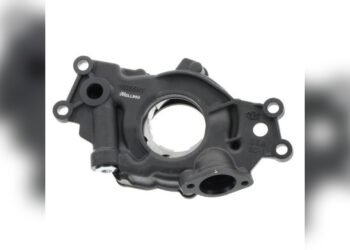Is your car overheating unless the heater is on? This can be a puzzling issue.
Let’s dive into why this happens and what you can do. A car overheating unless the heater is running points to a cooling system problem. The heater uses the engine’s heat, which helps cool it down. Turning on the heater can be a temporary fix but isn’t a long-term solution.
Understanding why this happens can save you from bigger problems down the road. In this blog post, we will explore common causes and solutions. We’ll also give you tips to prevent it from happening again. Stay with us to learn how to keep your car running smoothly and safely.
Common Causes Of Overheating
Car overheating can be a daunting issue. It often leaves drivers stressed and confused. Understanding the common causes can help in quick diagnosis and repair. Let’s explore the key reasons your car might be overheating unless the heater is on.
Low Coolant Levels
Coolant is vital for keeping your engine at the right temperature. If your coolant levels are low, your engine may overheat. This can happen due to leaks, which are common in older vehicles. Always check the coolant reservoir and refill if necessary.
Faulty Thermostat
The thermostat regulates the flow of coolant to the engine. A faulty thermostat can get stuck in the closed position. This stops coolant from flowing and causes the engine to overheat. Replacing a faulty thermostat is usually a quick fix.
Radiator Issues
The radiator is key to your car’s cooling system. It disperses heat from the coolant. If the radiator is clogged or damaged, it can’t do its job properly. This can lead to overheating. Keep an eye out for leaks or damage to the radiator fins.
Here’s a quick summary of common causes:
| Cause | Description |
|---|---|
| Low Coolant Levels | Due to leaks or insufficient refill. |
| Faulty Thermostat | Stuck in the closed position. |
| Radiator Issues | Clogged or damaged radiator. |
Role Of The Heater In Cooling
Have you ever noticed your car overheating unless the heater is on? This might seem strange, but the heater plays a crucial role in the cooling system. Understanding how this works can help you manage the situation better.
Heat Transfer Process
The heater in your car uses a process called heat transfer to help cool the engine. When you turn on the heater, hot coolant from the engine flows through the heater core. The heater core acts like a small radiator.
As the hot coolant passes through, it transfers heat to the air, which then blows into the cabin. This process helps reduce the temperature of the coolant, thus cooling the engine.
Think of it as a mini cooling cycle within the larger engine cooling system. The heater becomes a secondary radiator, aiding in the overall cooling process. This is especially helpful in emergency situations where the main radiator might be struggling to keep the engine cool.
Temporary Relief
Using the heater to cool the engine is a form of temporary relief. It can help prevent immediate damage when the engine is overheating. But it is not a long-term solution.
If your car overheats regularly, it is important to find and fix the root cause. Possible issues could be a faulty thermostat, a blocked radiator, or a failing water pump. Running the heater on high should only be a stopgap measure.
Important: Always monitor the temperature gauge. If the car continues to overheat, stop and let the engine cool before driving again.
Here is a quick summary in table form:
| Action | Effect |
|---|---|
| Turn on Heater | Transfers heat from coolant to cabin air |
| Coolant Temperature Drops | Helps cool the engine |
| Temporary Solution | Prevents immediate overheating damage |
Remember, using the heater is not a fix for overheating problems. It is just a way to manage the issue temporarily. Always seek professional help to diagnose and repair the underlying cause.
Quick Fixes For Overheating
Experiencing overheating issues with your car can be frustrating and worrisome. Thankfully, there are some quick fixes you can try to address the problem. These fixes can help you stay on the road and avoid further damage to your engine. Let’s dive into some practical steps you can take.
Refill Coolant
Low coolant levels can cause your car to overheat. To fix this, follow these steps:
- Allow the engine to cool completely.
- Locate the coolant reservoir.
- Check the coolant level. It should be between the “min” and “max” marks.
- If the level is low, add the correct type of coolant until it reaches the proper level.
Always use the coolant specified by your car’s manufacturer. Mixing different types can cause issues.
Check For Leaks
Leaks can lead to low coolant levels and overheating. Inspect your cooling system for signs of leaks:
- Look under the car for any puddles or wet spots.
- Check hoses and connections for drips or moisture.
- Inspect the radiator and water pump for visible leaks.
If you find a leak, you may need to replace the faulty part or seal the leak with a suitable product.
Inspect Thermostat
A malfunctioning thermostat can cause overheating. To inspect the thermostat:
- Ensure the engine is cool.
- Locate the thermostat housing, usually near the top of the engine.
- Remove the housing to access the thermostat.
- Check if the thermostat is stuck in the closed position.
If the thermostat is faulty, replace it with a new one. A working thermostat allows coolant to circulate properly, preventing overheating.

Credit: artsautomotive.com
Long-term Solutions
Long-term solutions for a car that overheats unless the heater is on are essential for ensuring your vehicle’s optimal performance. Focusing on the root causes can save you from frequent repairs and stress. Below are some effective long-term solutions:
Replace Radiator
A faulty radiator is a common cause of overheating. Replacing it can provide a long-term solution.
- Inspect for leaks and blockages.
- Check the radiator cap for a tight seal.
- Ensure the radiator fan is working properly.
Investing in a new, high-quality radiator can solve many overheating issues.
Upgrade Cooling System
Older vehicles may have inefficient cooling systems. Upgrading can make a significant difference.
- Install a larger radiator for better cooling.
- Upgrade to a high-performance water pump.
- Consider an electric fan for better airflow.
Enhanced cooling systems can handle higher temperatures, reducing the risk of overheating.
Regular Maintenance
Regular maintenance is crucial for preventing overheating. Simple checks can go a long way.
| Maintenance Task | Frequency |
|---|---|
| Check Coolant Levels | Monthly |
| Inspect Hoses and Belts | Every 6 months |
| Flush Radiator | Annually |
Regular maintenance ensures that your cooling system remains in top condition.
Preventive Measures
Preventing car overheating is essential for a smooth driving experience. Taking proactive steps can save you from costly repairs and ensure your car runs efficiently. Here are some preventive measures to consider.
Routine Inspections
Regular car inspections can detect potential issues early. Check the radiator, hoses, and belts for any signs of wear. Ensure the radiator cap is secure and not damaged.
Inspect the water pump and thermostat. These components are vital for the cooling system. Addressing small problems can prevent major breakdowns.
Proper Coolant Mixture
Using the correct coolant mixture is crucial. Follow the manufacturer’s guidelines for the right balance of water and antifreeze. This mixture protects the engine from extreme temperatures.
Check the coolant level regularly. Low coolant can lead to overheating. Top up with the recommended mixture if needed.
Temperature Monitoring
Keep an eye on the temperature gauge while driving. If it rises above normal, it could indicate a problem. Turn on the heater to help cool the engine temporarily.
Install an aftermarket temperature monitor if necessary. This device provides real-time readings and alerts you to any issues.
When To Seek Professional Help
When your car overheats unless the heater is on, it can be frustrating. Sometimes, the issue may be too complex to handle alone. Understanding when to seek professional help is crucial to avoid further damage.
Persistent Overheating
If your car consistently overheats, even with the heater on, it’s time to get expert help. Persistent overheating can damage the engine. It might indicate underlying issues that need expert attention.
- Frequent temperature spikes
- Engine warning lights
- Unusual noises
Complex Repairs
Some repairs are beyond basic DIY skills. If the problem involves complex parts or systems, professional mechanics can provide the necessary expertise. They have the tools and experience to handle intricate repairs.
| Repair | DIY Difficulty |
|---|---|
| Radiator Replacement | High |
| Thermostat Replacement | Moderate |
| Water Pump Repair | High |
Expert Diagnosis
Professionals can diagnose issues accurately. They use advanced diagnostic tools to pinpoint the exact cause of overheating. This ensures the problem gets fixed right the first time, saving you time and money.
- Advanced diagnostic tools
- Accurate problem identification
- Cost-effective solutions
Don’t let a persistent issue ruin your driving experience. Seek professional help to keep your car in top condition.
Essential Tools And Supplies
When a car overheats unless the heater is on, the issue requires immediate attention. To diagnose and fix the problem, you’ll need some essential tools and supplies. These items help you pinpoint the cause and ensure your car runs smoothly.
Coolant Tester
A coolant tester checks the antifreeze level and quality in your radiator. This tool helps you ensure the coolant is at the right concentration. It also detects if the coolant is contaminated. Contaminated coolant can cause overheating. Regular testing prevents this issue.
Radiator Cap
The radiator cap is small but essential. It keeps the cooling system pressurized. A faulty cap can lead to overheating. Always check the cap for damage or wear. A new cap ensures proper pressure. This helps maintain the correct temperature in your engine.
Thermostat
The thermostat regulates engine temperature. It opens to allow coolant to flow when the engine gets hot. If it sticks closed, the engine will overheat. Replacing a faulty thermostat is crucial. It ensures the coolant circulates properly, keeping the engine cool.

Credit: www.threads.net
Tips For Safe Driving
Driving a car that overheats unless the heater is on can be stressful. But, there are ways to manage this issue and stay safe on the road. Here are some essential tips for safe driving.
Monitor Temperature Gauge
Always keep an eye on the temperature gauge. This helps you catch overheating early. If the needle rises, pull over safely. Let the car cool down. Don’t open the radiator cap when hot.
Avoid Overloading
Keep your car light. Overloading puts extra stress on the engine. This increases the risk of overheating. Remove unnecessary items from the trunk. Travel with only essential items.
Use Heater Wisely
Use the heater to manage engine temperature. Turn it on if the engine starts to overheat. This draws heat away from the engine. Open windows for comfort if it gets too warm inside.

Credit: www.amazon.com
Frequently Asked Questions
Why Does My Car Overheat When The Heater Is Off?
Your car may overheat due to a faulty thermostat, low coolant, or a blocked radiator.
Is It Safe To Drive My Car If It Overheats?
No, driving an overheated car can damage the engine. Stop and let it cool down.
Can A Bad Radiator Cause My Car To Overheat?
Yes, a clogged or leaking radiator can cause overheating. It restricts coolant flow.
How Can I Prevent My Car From Overheating?
Regularly check coolant levels, inspect hoses, and ensure the radiator and fans work properly.
What Should I Do If My Car Overheats?
Turn on the heater, pull over safely, and let the engine cool. Then check coolant levels.
Conclusion
Maintaining a car’s cooling system is crucial. Overheating can lead to serious damage. Regular checks and timely repairs can prevent issues. Always monitor coolant levels and look for leaks. A reliable mechanic can help diagnose persistent problems. Keeping the heater on is a temporary fix.
Address the root cause for long-term solutions. Simple steps can keep your car running smoothly. Stay safe and avoid costly repairs.
















